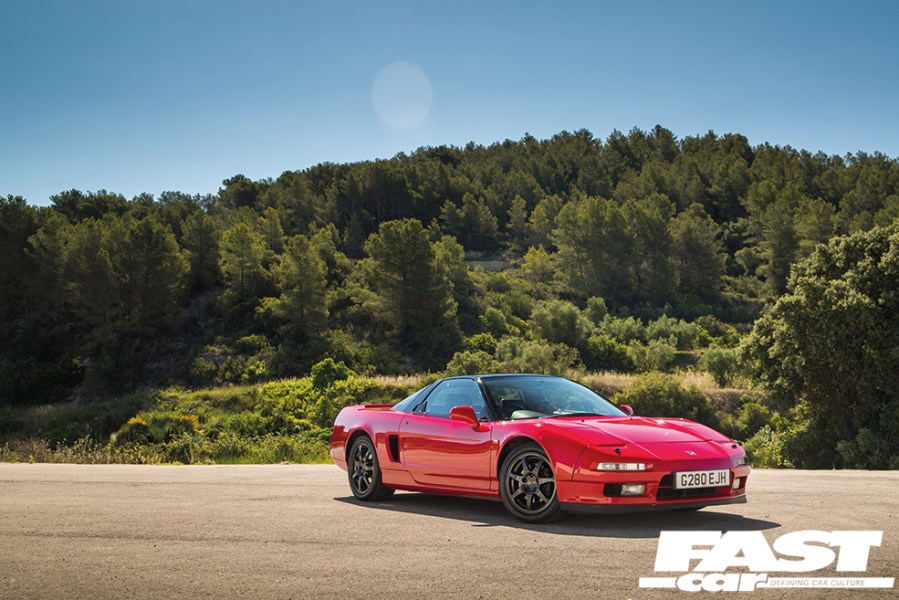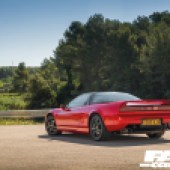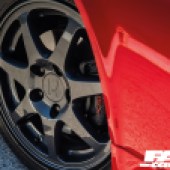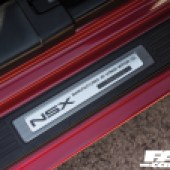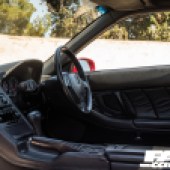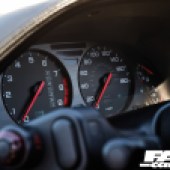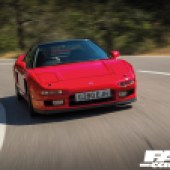A classic supercar with outstanding reliability, timeless looks plus stunning dynamics and handling: Ayrton Senna would surely have approved. Prices have been rising, so is it now time to buy a Honda NSX?
You have to trace the history of the Honda NSX supercar back some 35 years. A manufacturer that had built its entire reputation on reliable, well-built, if somewhat conservative, front engine/drive vehicles had an enterprising and forward-thinking R&D set-up, and the design engineers there wanted to build a sports car.
Honda had returned to Formula 1 Grand Prix racing in 1983 and so performance was inherent in the company’s engineering philosophy, but the NSX was still a massive sea-change for the company.
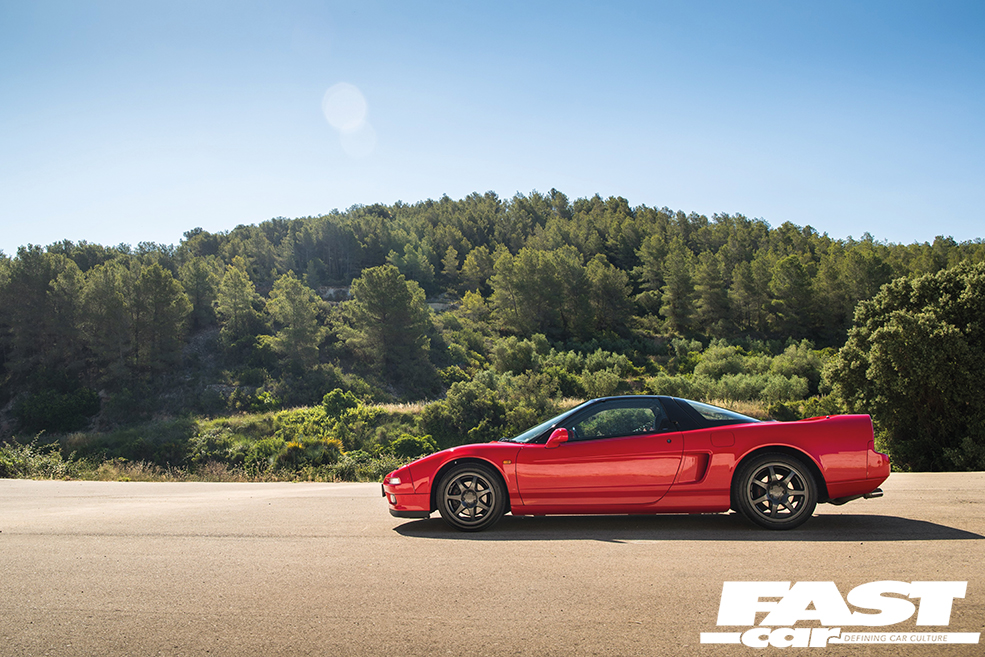
The design developed in a very analytical way; perhaps more in-keeping with the Japanese philosophy than the more emotional European approach where style and branding are so dominant. The Honda engineers plotted data from rival models, comparing running performance (vehicle weight/engine output) against wheelbase-to-weight (stopping performance) with the aim to get the new sportscar to – on paper at least – outperform its rivals, and be dynamically much closer to a F1 race car.
Weight, therefore, was a highly significant factor. The body and monocoque had to have the strength for the engine power. But it had to be light because this machine would have all the driver comfort extras of air conditioning, electric windows and traction control, which all add weight. Initially a mix of steel and aluminium was proposed, but this didn’t meet these weight targets and so it was decided to build the entire monocoque in aluminium.
Now that is a pretty simple statement to write, but this was the world’s first mass production car to offer an all aluminium monocoque body, and this was happening in the mid-1980s.
If the engineering was to be ground-breaking, the new NSX had to look good and the sleek profile is said to have been inspired by the F16 jet fighter. Prototypes were built and Honda decided to use one of its in-house contracted drivers to offer his opinion of the car at the Suzuka circuit.
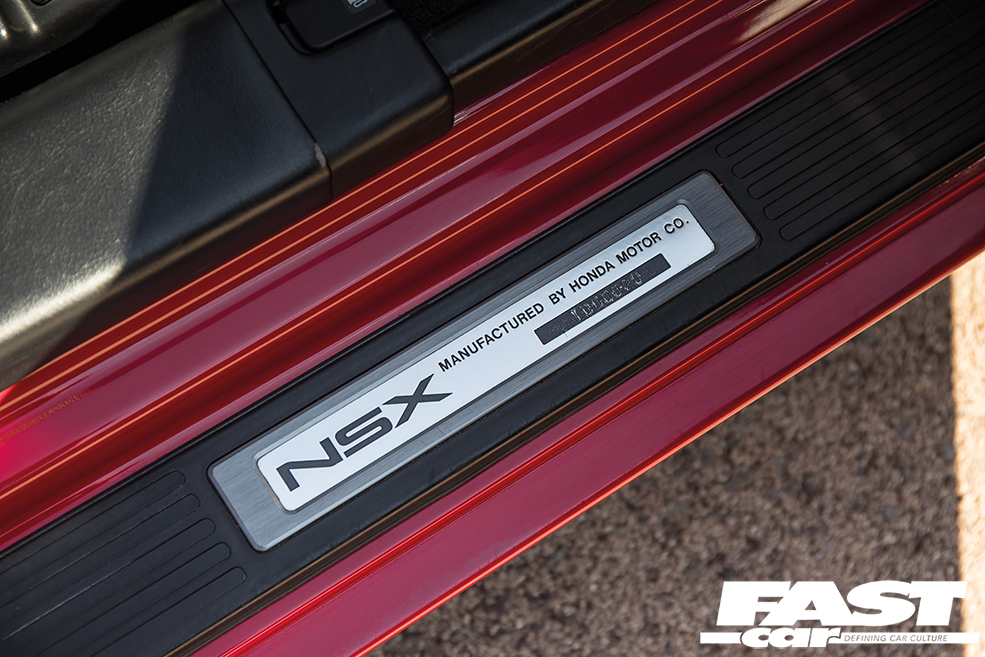
The driver, a certain Ayrton Senna, was impressed but questioned the fragility of the car. Despite what the calculations said, Senna felt the original chassis wasn’t stiff enough, which as you can imagine, sent the engineers into something of a spin, as they had believed their car was a match for anything that Porsche or Ferrari had to offer. Of course, Senna was Honda’s F1 driver at the time and they sensibly took his views on board, tweaking the NSX chassis before further testing at Nürburgring, where the car’s increased rigidity proved Senna was right.
World debut
The NSX made its world debut as a prototype in February 1989 at the Chicago Auto Show, under its North American brand name, Acura. The N in the title represented ‘new’, the S was for ‘sportscar’ and the X for ‘unknown world’; with X the mathematical symbol for an unknown value. The car was launched to the public in September 1990, UK cars arriving in 1991.
The first models had Honda’s all-alloy, quad-cam, 3.0-litre V6 VTEC, which produced a modest 252bhp, but in a car that only weighed under 1400kg the performance was impressive, available with either a five-speed manual or four-speed automatic transmission. Mid-engined, power went to the rear wheels through a limited-slip differential. The overall look was one of sophistication, rather than ‘look-at-me’ stunning, but the rather conservative nature of the body design has aged well; an NSX still looks modern on today’s roads.
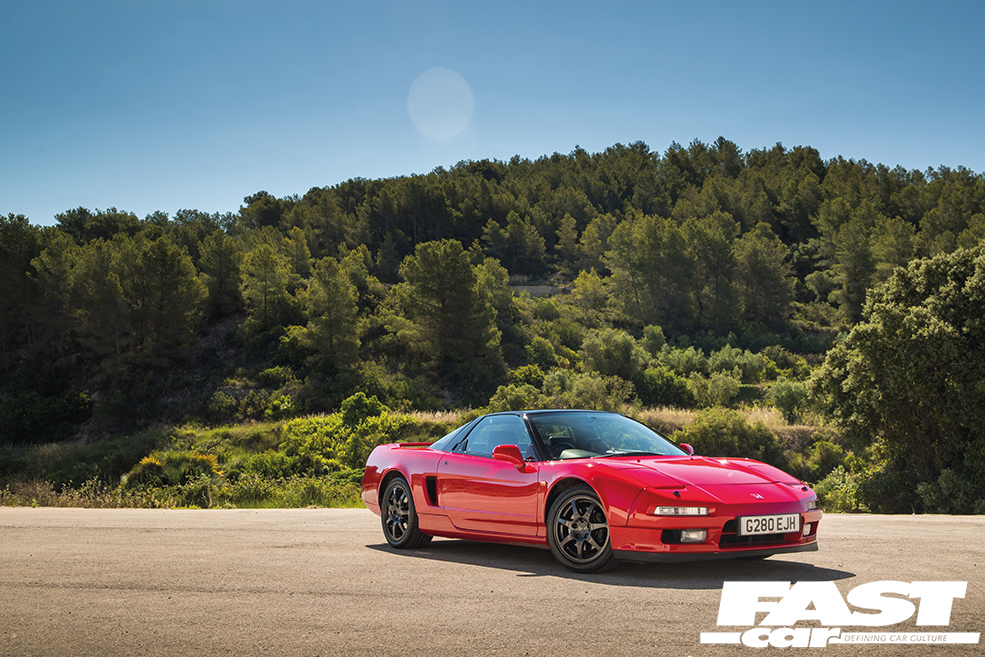
The interior never set anyone’s pulses racing, Honda dipping into their parts bin for the instrumentation and switchgear, but it is simple and unfussy. It’s a proper supercar in that there’s not much space inside the cabin for anything other than a driver and passenger. But the luggage space in the rear is good for a mid-engined design.
A removable roof was offered in 1995, as the NSX T. Two years later the sportscar got a complete refresh and the more powerful 3.2-litre V6 was fitted, coupled with a new six-speed manual transmission (the automatic version remained with the 3.0-litre unit). It only added 20bhp, but has far better lowdown torque. In 2002, the pop-up headlights were dropped and the NSX got larger, 17-inch wheels.
Towards the end of the NSX production period, Honda made a limited edition series of models, the Type R. Dropping the air-conditioning, traction control and sound-deadening removed some 120kg from the overall weight. Stiffer suspension, thicker anti-roll bars and a higher rate limited-slip diff gave this model a sharper, more responsive edge. Less than 500 were produced, originally offered for the Japanese market, Type Rs have made their way to Europe to become the most desirable NSX model available.
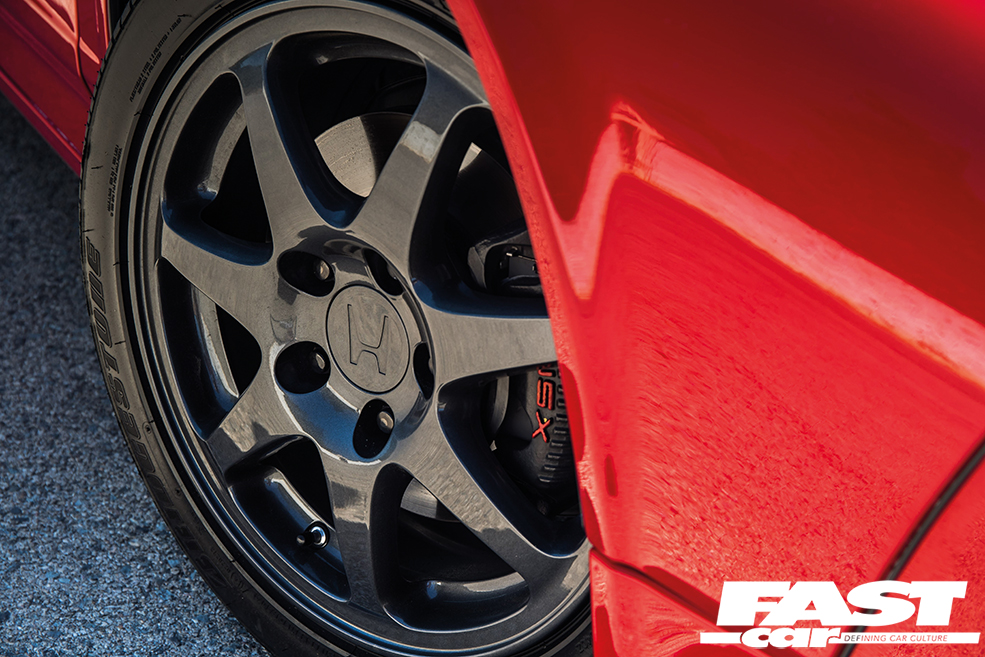
What to look for
It should go without saying that you want to find an NSX with a good service history, preferably from a specialist. We discussed the options with Graham Horgan of Plans Performance. With over 30 years of hands-on experience in circuit racing, including Historics, it was a customer asking Graham to build and run a racing NSX that originally got him started with this car some years ago.
We asked Graham, is it fair to claim that the NSX is a very reliable classic supercar? “Well, compared to other similar British or Italian sports cars from the same era, the NSX is amazingly reliable,” he told us.
Well looked after
“You must remember that when talking about the very first models arriving in the UK, you are talking about cars 27 years old, so they need to have been looked after.
“It’s especially important that the cambelt has been changed – this has to be done every seven years or 70,000 miles. A complete camshaft service and water pump change will cost you around £1,700/£2,000, so bear that in mind when looking to buy a car.”
After that, the main problems tend to be electrical. “Remember that the NSX had some ground-breaking electronics at the time and these are getting a little old now. The NSX air-conditioning system was the first production climate control system and today may need some work. Same goes for the Bose hi-fi set-up; when launched it was top end, but there can be problems today – but they can be sorted.
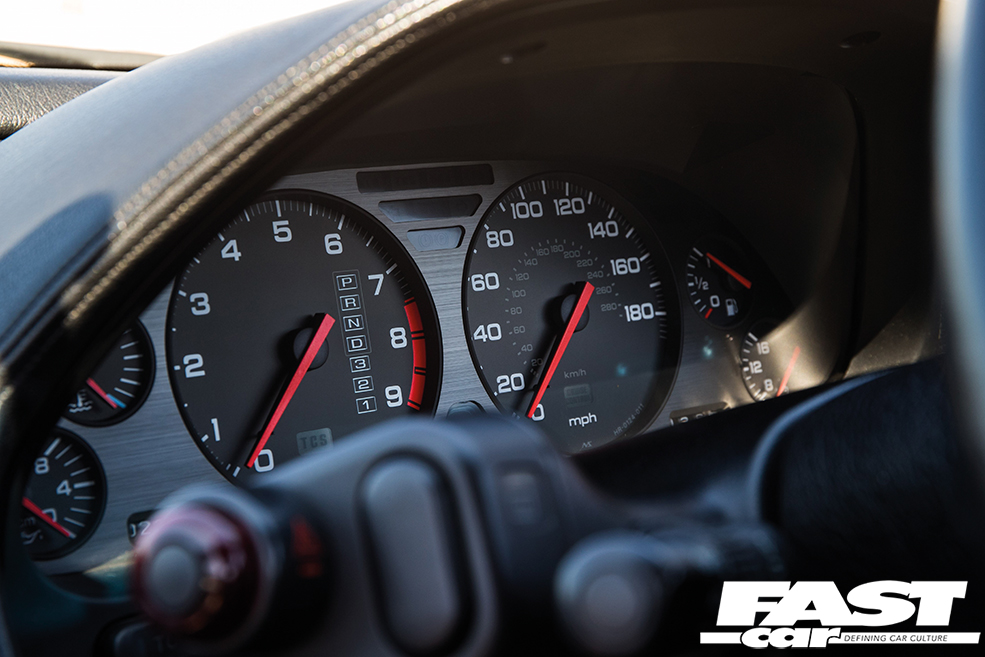
More important is the ABS system. “Over time the valves can stick. Power steering is also electronic and can go wrong. However, a well-looked after car, regularly serviced, should be very reliable and you will then be looking at an annual service of around £200.
“It’s also worth making sure the windows rise and fall since the electric motor and regulator are sold as one unit and they aren’t cheap. As you would expect, if the car has been tracked and driven hard it may need work on bushes, ball-joints and bearings, but that’s pretty standard.”
How much?
Around 20,000 NSX models were produced, so they are reasonably rare and you are unlikely to park next to one in the UK. Excellent reliability and Honda’s quality production process means earlier models may have covered significant mileage, but this shouldn’t put you off.
It means you may find models as low as £30,000 for early automatic versions. Push that budget another £10,000 and you’ll find the more preferable manual models in the 3.0-litre range. Up to £50,000 and you will now find lower mileage 3.0-litre options. Targa NSX T models often tend to be slightly cheaper, since some think higher mileage open-topped models suffer from scuttle shake. But this gets short shrift from Graham Horgan: “There’s a myth about Targa models. Don’t forget there are some 60 differences made to the open-topped version’s monocoque chassis to keep its strength and Honda still have a keen eye on keeping the weight down. It’s an excellent option if you want an open-topped sports car.”
Automatic versions are generally cheaper than manual models. The auto transmission is rather old-fashioned compared to modern options, changes are quite slow, but if you are more interested in a cruising classic supercar, you could find this an undervalued option. “Back in the day when the NSX was launched,” says Graham Horgan, “you couldn’t buy an automatic Ferrari, now you can’t buy a manual one. I still think that automatic NSX models are undervalued, they are different but it’s still a very nice car.”
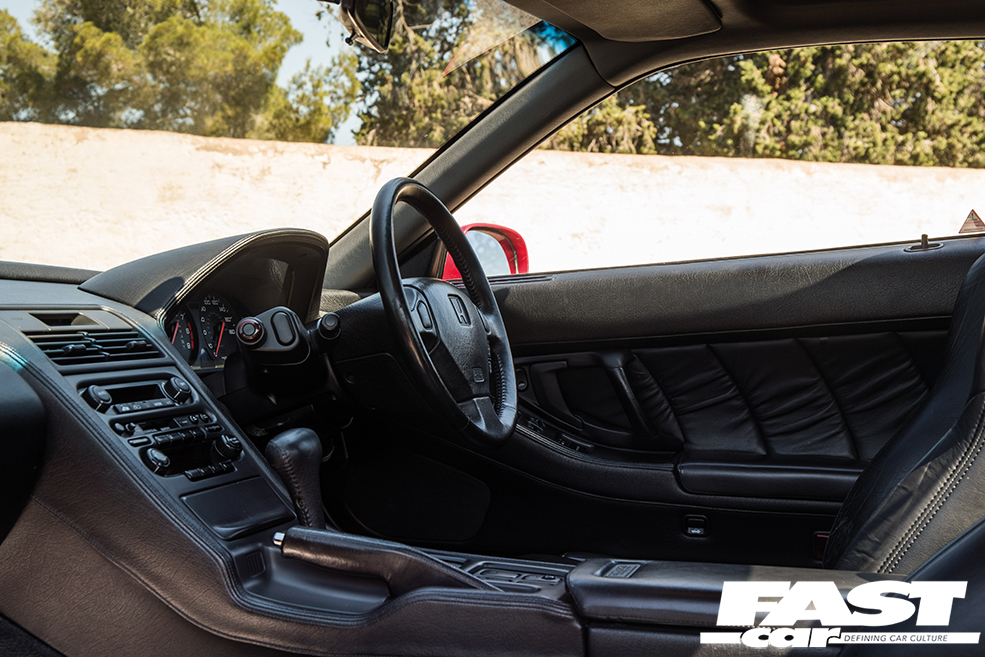
If you are looking for the later 3.2-litre versions you will be looking at over £50,000 and mint, low mileage versions may nudge six figures. Those rare Type R models now attract serious money, especially since there are only around half a dozen in the UK. If one comes up for sale, it’s likely to be in top condition and could set you back £150,000/£175,000. The second generation Type R models, called NSX R are even rarer; Honda produced 82 of them and there are only a couple in the UK.
If you track NSX prices over the last five years you will see that demand is growing, which means prices have been rising and as you have read from our expert’s view, running costs are not high, which means that while claiming the NSX is an ‘affordable supercar’ is perhaps somewhat patronising, the model shouldn’t break the bank.
What to expect
If you are looking for a supercar that strikes fear in a driver as you slide behind the wheel, the Honda NSXis not for you. Calling it docile is perhaps too strong, but it is certainly light and easy to drive; urban traffic, supermarket car parks and those short trips to the local shop for that forgotten bottle of milk are all easily accomplished.
Take an NSX to a track day and it’s not a case of flicking a switch to unleash some hidden beast – it will just perform at greater and greater speeds with equal aplomb. You will expect a firm ride and that is what you get, but it has a light feel which will allow you to fully appreciate the exceptional balance the car possesses. The V6 engine wants to rev, sounds great, and is responsive to your right foot exercising itself.
I can admit to having been a journalist at the time of the NSX launch and I enjoyed a driving day comparing the car with then contemporary rivals like the Porsche 911. My instructor that day was former F1 and sports car racing driver Jonathan Palmer. During one high speed lap, at around 130mph, I asked what the main difference there was between the NSX and the 911: “That’s simple,” he said, violently throwing the car sideways (we were at Bruntingthorpe, so thankfully there was a lot of space!). There was a lot of tyre squeal but very little drama and Palmer casually brought the car back inline. “Do that in the 911 when you drive it later and we’ll be pulling bits of you out of the hedge,” he said with a grin.
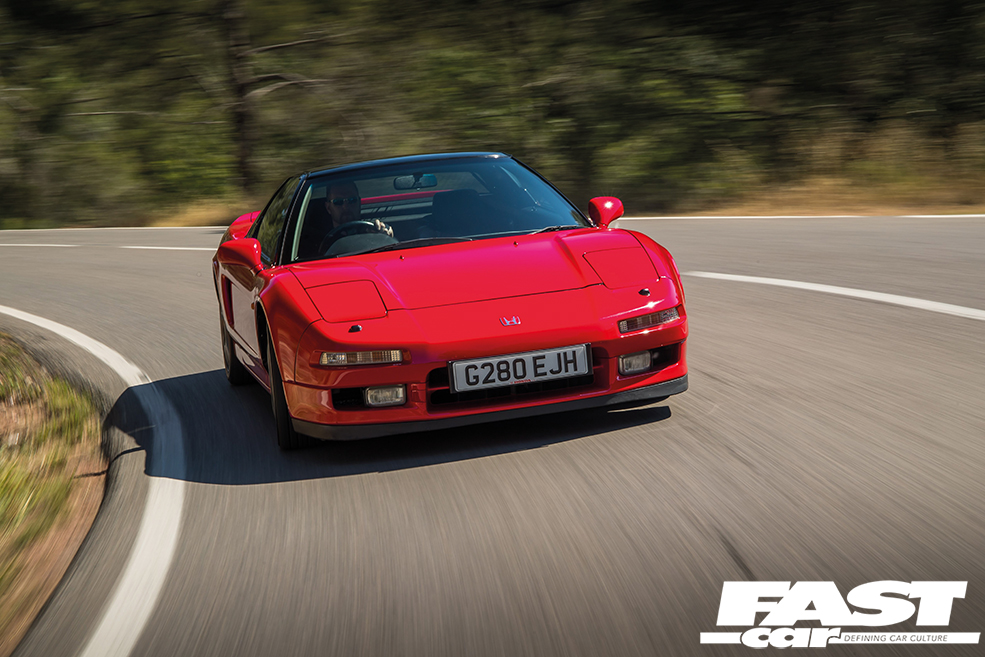
We finished the day with a fast cross country drive and it was noticeable how much more relaxing it was in the NSX when compared to the Porsche. You can argue all day which you might prefer, but dynamically the NSX has a sensational chassis that even all these years later will impress. It was so much quicker than many of its rivals when it launched and it did that without the need for outright power and brute force. Today it remains a very subtle, but hugely satisfying, supercar.
Modifying an NSX
Most of the modifying on the NSX happened in the US, and involved turbocharging. The V6 is a strong unit and can take the extra power, with the necessary upgrades. Projects producing around 500bhp on the Acura NSX have been popular and we found one conversion by American racers LoveFab that produced a customer road-legal ‘street’ NSX that competed in the famous Pikes Peak hillclimb with some 642bhp – and a claim that well over 700bhp was available.
That said however, very few UK NSX cars have been modified, especially since prices have begun to rise. “Why would you bother?” asks Graham Horgan. “The way prices are now, if you were to spend £10k modifying one, you’d end up with a car worth £15k less than when you started, and that’s on top of the original 10 grand. Plus you’d ruin it,
in my view”.
Wheel and tyre options have increased since the NSX was first launched, so there is some latitude to personalise your car. But please don’t fit one of the hideous body kits that can be found on some US cars. Gluing on some nasty side sills will date the car and impress no-one. Trust us.
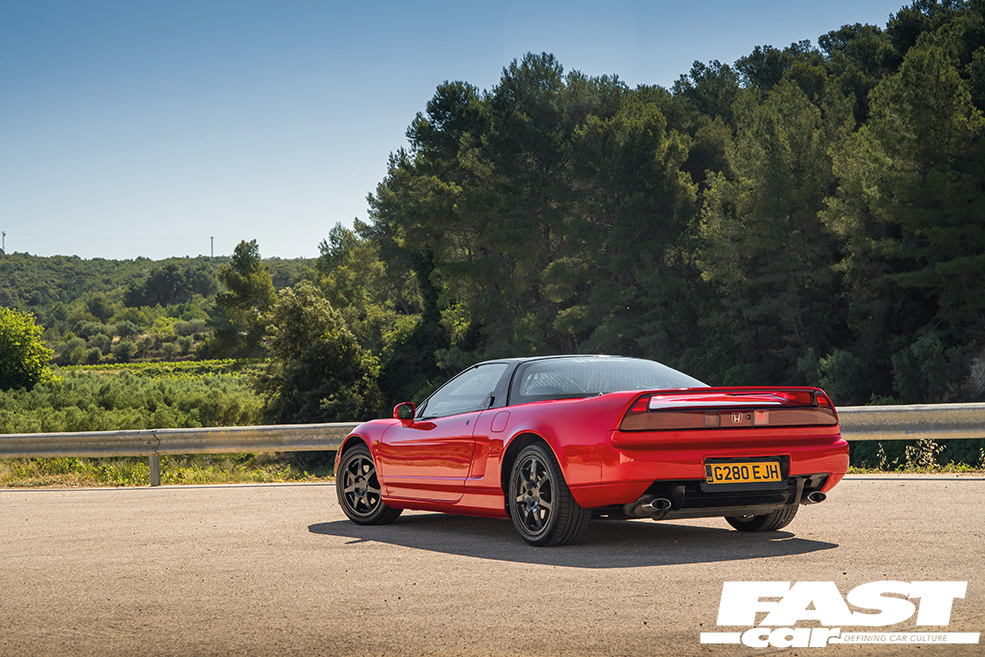
Time To Buy?
If you don’t want to take our word for it, then remember that Ayrton Senna was most impressed with the Honda NSX. Indeed, he reputedly got stopped for speeding while driving one to Silverstone for the British Grand Prix!
The car embodies many to the design concepts later used in the McLaren F1, and Gordon Murray has spoken very positively about the NSX. The look of the car is subtle enough to have aged well; it’s a supercar that is more smooth McLaren than aggressive Lamborghini (a fact that has continued with the latest version). It is an esoteric classic supercar, and that’s a strong part of the appeal.
If you search well and get a car with a decent, authentic service history then, while you cannot guarantee reliability, you can certainly expect it.
Prices can rise and fall (especially so at the moment, given the global economic uncertainty), but the graph for the NSX has been moving in a positive direction for a few years now. In the last six months or so there has been some hesitation in the classic car market and so prices have flattened. So while it’s a bit much to claim an NSX could be a solid investment, experience suggests it’s unlikely you’ll scorch your wallet if you do decide to sell it on after
a few years.
Manual cars are certainly at a premium, but maybe consider an auto, or even the sometimes maligned Targa model.
In the end, however, it’s all about the driving experience and that’s where the Honda NSX will certainly deliver – and we can thank a certain Mr Senna for that.
Feature taken from Ultimate Supercar. Words: Nigel Fryatt.

